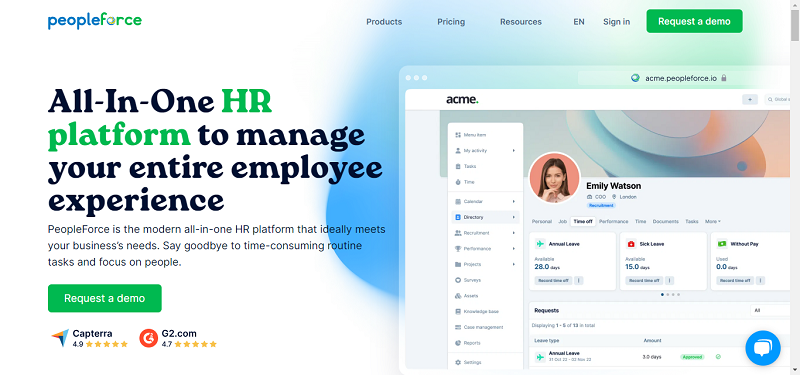The hybrid work model is here to stay—at least for the time being.
That’s how things feel in these still uncertain times. This new way of work that has evolved from the pandemic-driven, work-from-home strategy has clearly gained traction among more organizations. And while no one can guess what the future will bring, one thing is certain for now: hybrid work models make application management more difficult for businesses.
Consider all the new tools that organizations adopted during 2020 to support remote workers, and the applications many are implementing now to support hybrid work. Businesses were forced to quickly deploy software-as-a-service (SaaS) and other cloud platforms to stay ahead of the global shift to remote work and now the adoption of hybrid work. This shift is both necessary and significantly challenging for CIOs.
Unfortunately, some IT leaders have focused on making SaaS and other cloud resources available to employees before giving thought to whether they actually want or need them.
Add to this mix the host of shadow IT activities underway that make the IT environment even more complex, and it’s clear that CIOs need to understand that forcing employees to use too many tools could very well diminish workers’ productivity. A 2021 report by Cornell University shows that 43% of workers reported spending too much time switching between different tools, up to an hour a day in most cases. The solution is straightforward: IT leaders must implement cloud productivity apps their people love to minimize the threat of shadow IT.
One good practice for effective application management is to gain employee buy-in for authorized apps. Among the causes of shadow IT are employee dissatisfaction with their organization’s digital workplace tools, or their resistance to switching to new company-sanctioned tools when they are accustomed to existing tools.
When staffers have been using a particular application for yeas and suddenly are forced to use a completely different application, they won’t be pleased and might be slow to adopt it or even take matters into their own hands via shadow IT.
Getting employee buy-in prior to selecting new SaaS applications can help avoid this problem. This could involve creating a central committee of different business line leaders who identify which applications are needed to best support the employees in their areas. The aim should be to focus on products that are easy to use, help employees do their jobs, and are actually needed.
Another important practice is to streamline the number of productivity tools in use within the organization. As noted via the Cornell study, a good number of employees are overwhelmed by the number of new tools. CIOs and IT teams need to focus on being more selective with tool choices and eliminating those that are not being used or are not a good fit for the organization.
IT leaders also need to have greater visibility into the corporate network to improve management of applications and reduce risk. Many cloud-based applications are designed for easy setup and access. This might be great for users, but it can also make it difficult for the IT department to keep track of assets and know how they are being used.
The lack of visibility makes it more likely that shadow IT will creep into corporate cloud environments. And because every new application connected to the enterprise network represents a potential cyber security vulnerability, it’s clear why IT needs to have greater visibility and control.
Runaway cloud application deployment goes beyond cyber security risks. CIOs need to keep in mind that every application connected to the corporate network can have a financial impact on the organization’s bottom line.
Microsoft 365 (M365) provides a good example of the need for effective application management. For many organizations, M365 is now essential to run operations. Still, some employees are resistant to adopt the Microsoft Teams platform because they’re more comfortable with alternatives such as Slack or Zoom. This is fine, provided that IT administrators know exactly which applications are accessing corporate data.
Managing a large M365 environment (5,000 to 10,000 users) can be especially difficult. With just a few hundred users, a Microsoft 365 tenant most likely doesn’t have much complexity. A single M365 administrator can handle the workload.
But as the M365 tenant gets larger and the users more distributed, typical administration might require multiple people, typically a helpdesk. More users also means more configuration of components such as email and cloud storage. Reporting becomes more difficult at larger sizes as well.
Multiple departments and multiple geographies means that different users have different needs and a centralized helpdesk might not understand the business needs for all of these users.
Microsoft provides a collection of Administration Centers, but these are essentially one size fits all. They’re meant to work for the smallest and largest M365 tenants. Microsoft has announced Project Lighthouse, aimed at managed service providers (MSPs) to help with larger tenants. But it’s unclear if enterprise customers will be able to benefit from it.
The complexity of M365 deployments reflects the overall complexity that has now become so common for all kinds of businesses. With the new hybrid work model, it’s vital that IT have effective discovery mechanisms in place to understand which applications are deployed. By having an inventory of all applications, IT can know which applications are in use and whether it’s worth allowing employees to keep using them.
By Doug Hazelman





